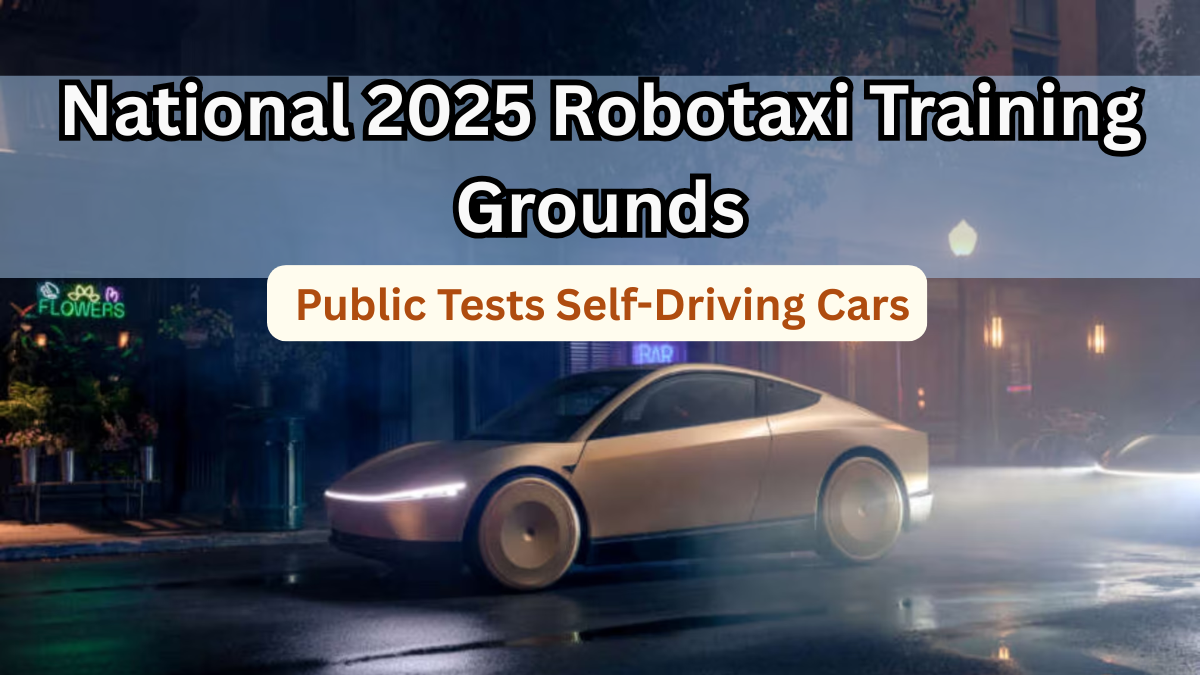In 2025, India is setting the stage for a transportation revolution with the launch of the Robotaxi Training Grounds. These state-of-the-art facilities are designed to facilitate self-driving car testing in real-world conditions, ensuring that autonomous vehicles are safe, reliable, and ready for public roads.

What Are the Robotaxi Training Grounds?
The Robotaxi Training Grounds are specialized zones where autonomous vehicles undergo rigorous testing. Unlike traditional test tracks, these grounds simulate actual urban and rural environments, providing a comprehensive platform for self-driving car testing.
Key Features:
-
Diverse Road Conditions: Replicates various terrains and traffic scenarios.
-
Advanced Infrastructure: Equipped with AI-powered traffic management systems.
-
Safety Protocols: Includes emergency response simulations and safety labs.
-
Public Engagement: Offers opportunities for citizens to observe and participate in controlled test rides.
Purpose and Importance
The primary goal of these training grounds is to ensure that autonomous vehicles can navigate complex traffic situations safely. By providing a controlled environment for testing, developers can fine-tune their systems to handle real-world challenges effectively.
Benefits:
-
Enhanced Safety: Thorough testing reduces the risk of accidents.
-
Public Confidence: Transparency in testing builds trust among the public.
-
Regulatory Compliance: Helps in meeting legal and safety standards.
-
Accelerated Innovation: Fosters rapid development and deployment of autonomous technologies.
Public Participation and Transparency
One of the standout features of the Robotaxi Training Grounds is the emphasis on public involvement. Citizens are encouraged to visit the facilities, observe the testing processes, and even experience short demo rides. This approach demystifies the technology and allows the public to witness firsthand the safety measures in place.
Environmental and Economic Impact
The introduction of autonomous vehicles is expected to have a positive impact on the environment and the economy.
Environmental Benefits:
-
Reduced Emissions: Electric-powered robotaxis contribute to cleaner air.
-
Efficient Traffic Flow: Optimized routes reduce fuel consumption.
Economic Advantages:
-
Job Creation: New roles in technology development and infrastructure maintenance.
-
Cost Savings: Reduced traffic congestion leads to lower transportation costs.
Looking Ahead: The Future of Autonomous Mobility
The Robotaxi Training Grounds are just the beginning. By 2030, autonomous vehicles are expected to be a common sight on Indian roads, transforming the way people commute. These developments align with global trends, as seen in cities like Munich, San Francisco, and Pune, where similar initiatives are underway.
Highlights at a Glance
| Feature | Description |
|---|---|
| Launch Year | 2025 |
| Primary Focus | Self-driving car testing |
| Key Facilities | AI monitoring, smart traffic signals, weather simulation labs |
| Public Role | Observation, participation in demo rides |
| Industry Impact | Accelerates autonomous tech development |
| Sustainability | Promotes electric-powered robotaxis |
Frequently Asked Questions (FAQs)
1. What are Robotaxi Training Grounds?
They are specialized facilities where autonomous vehicles undergo rigorous testing in simulated real-world conditions.
2. Why are these grounds important?
They ensure that autonomous vehicles are safe and reliable before being introduced to public roads.
3. Can the public participate in testing?
Yes, citizens can observe the testing processes and experience demo rides to understand the technology better.
4. How will this impact future transport?
The initiative is expected to accelerate the adoption of autonomous vehicles, leading to safer, more efficient, and environmentally friendly transportation options.
Click here to learn more